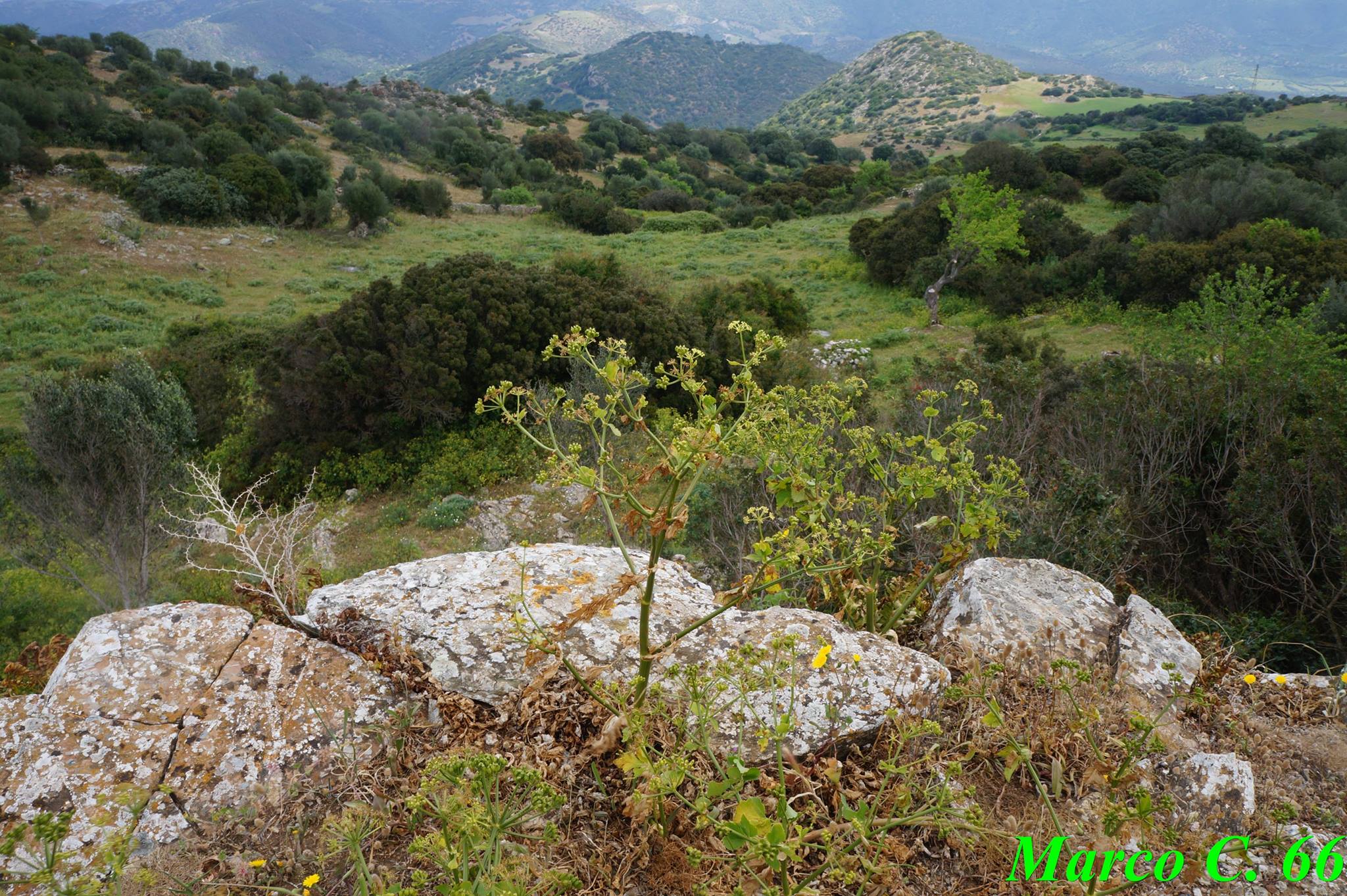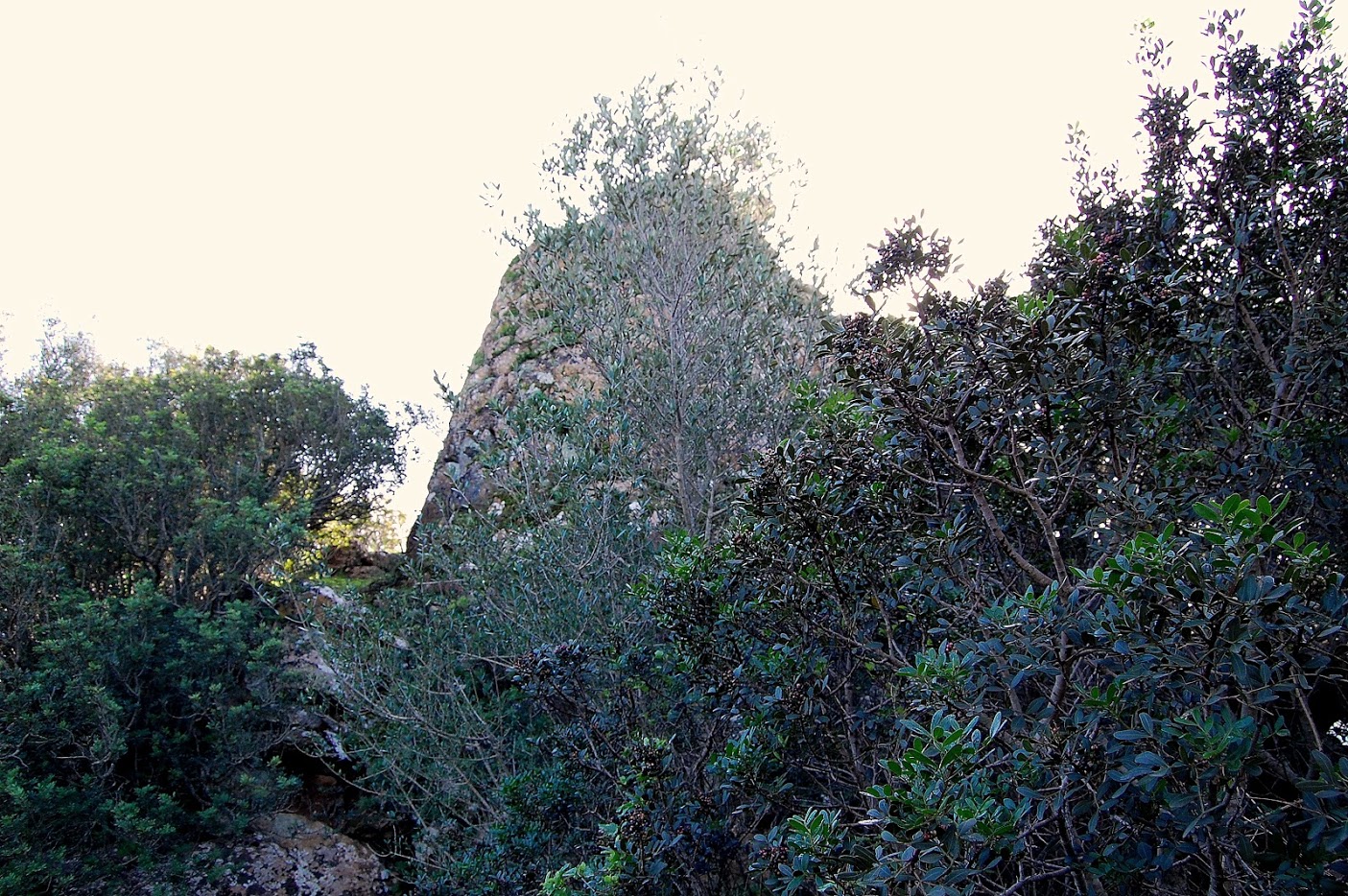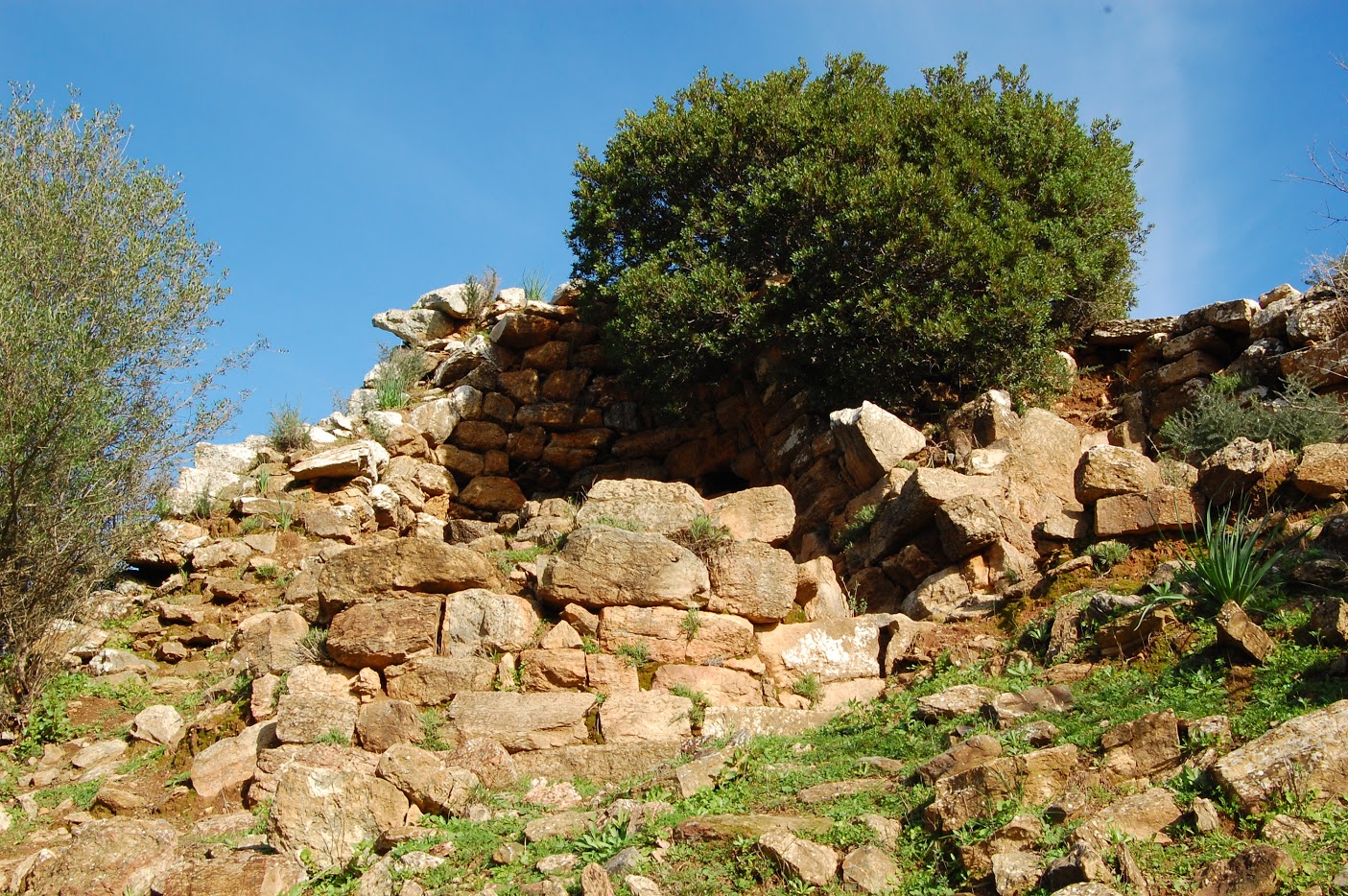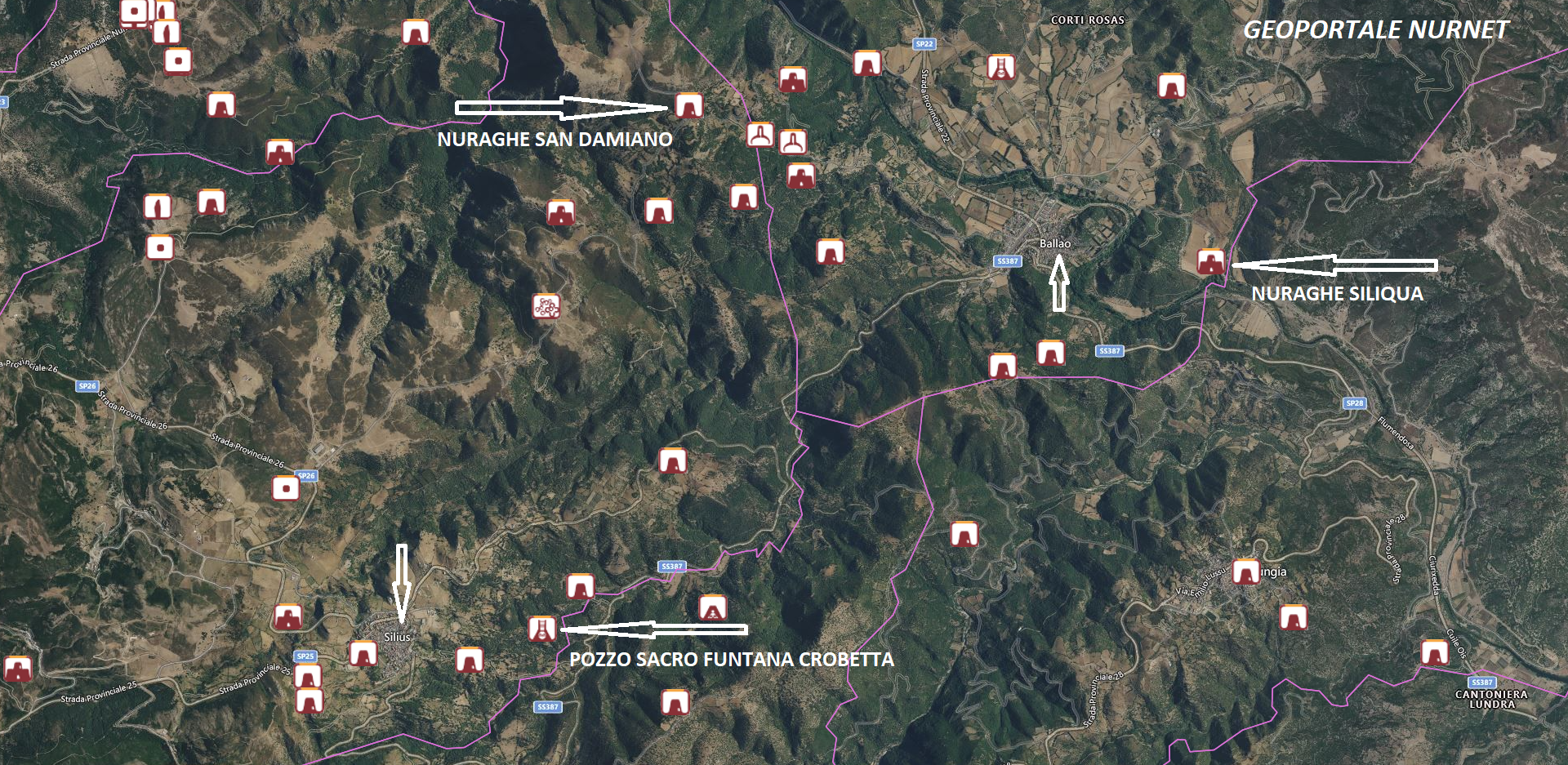99b.2, 99d.2 and 99c.2: Built during the nuragic age, the sacred well of Funtana Crobetta, in Silius, features the canonical elements of temples dedicated to the worship of water: the outer vestibule, the entrance with the staircase, both with a trapezoidal plan, and the short staircase that descends towards the well. The steps are unfortunately filled with debris, but the structure above them is perfectly visible, following the same shape in a mirrored manner with its eight descending lintels. The chamber containing the water is covered by a pointed dome just under 4 meters high, completely buried. Unfortunately, the monument is very degraded due to clandestine excavations and unfortunate acts of vandalism.
The nuraghe San Damiano, in Silius, features a collapsed tholos but is also of great interest for the high value of the environment in which it is set.
The nuraghe Siliqua, in Ballao, is made of schist, with rectangular blocks arranged in regular rows, constructed with a layer of ochre clay. It consists of a main tower and an adjacent chamber, connected to the former by a short wall curtain. In the internal wall of the tower, various voids can be seen that presumably served for the insertion of a wooden loft. At the foot of this nuraghe are the huts of the nuragic village.
The photos of the sacred well Funtana Crobetta are by Sergio Melis. Those of the nuraghe San Damiano are by Marco Cocco, while those of the nuraghe Siliqua are by Alberto Valdès.













